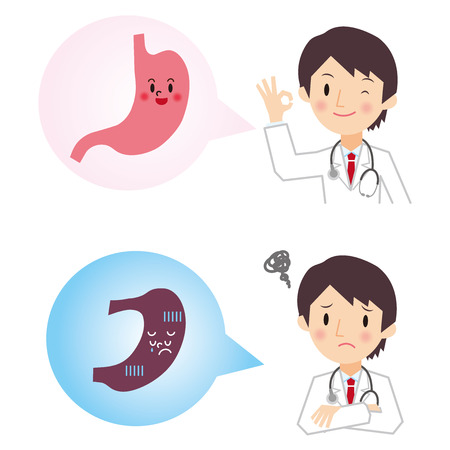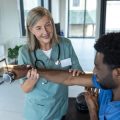Understanding Hip Replacement Surgery in the UK
Hip replacement surgery is a widely performed procedure across the UK, primarily aimed at relieving pain and restoring mobility for individuals suffering from severe hip joint damage. The operation typically involves replacing the damaged or worn parts of the hip joint with artificial components, known as prostheses. In the UK, there are two main types of hip replacements: total hip replacement, where both the ball and socket of the joint are replaced, and partial (or hemi) hip replacement, where only the ball is substituted. Another notable option is the hip resurfacing technique, although it is less commonly used today due to specific patient suitability criteria.
The National Health Service (NHS) provides a clear care pathway for patients undergoing hip replacement surgery. This journey begins with a referral from your GP, followed by consultations with orthopaedic specialists, pre-operative assessments, and finally admission for surgery. After the operation, patients receive structured post-operative care that includes physiotherapy, pain management, and regular follow-up appointments to monitor progress. NHS hospitals adhere to rigorous standards and protocols designed to ensure patient safety and optimise outcomes. Understanding these procedures and pathways helps patients in the UK make informed decisions and prepares them for what to expect before, during, and after their hip replacement surgery.
Immediate Post-Operative Care
After hip replacement surgery in the UK, the immediate post-operative phase is crucial for laying the foundation for a successful recovery. This period is highly structured and follows NHS protocols to ensure patient safety, promote healing, and minimise risks such as infection or blood clots. Below, you will find details of typical hospital routines, pain management strategies, and the expected timelines for discharge according to UK guidelines.
Hospital Recovery Routines
Once the patient is transferred from the operating theatre to the recovery ward, nursing staff closely monitor vital signs (blood pressure, pulse, oxygen levels) and wound condition. Early mobilisation is prioritised to prevent complications like deep vein thrombosis (DVT). Physiotherapists often visit within hours of surgery to guide gentle leg movements and assist with getting out of bed as soon as it is medically safe. The table below summarises key activities during this stage:
| Time After Surgery | Typical Activity | Staff Involved |
|---|---|---|
| 0-6 hours | Pain monitoring, vital sign checks, initial movement assessment | Nurses, anaesthetist |
| 6-24 hours | Assisted mobilisation, basic physiotherapy exercises, wound inspection | Nurses, physiotherapist |
| 24-48 hours | Increasing mobility (walking with aids), ongoing monitoring, start occupational therapy advice | Nurses, physiotherapist, occupational therapist |
Pain Management Approaches
Pain control is a top priority in the immediate post-operative period. The NHS typically employs a multi-modal approach—combining oral analgesics such as paracetamol and codeine with stronger medications like morphine if needed. Regional anaesthesia (e.g., spinal block) may be used during surgery to reduce early pain. Staff encourage patients to communicate their pain levels clearly so that medication can be adjusted promptly. Non-pharmacological methods such as ice packs and positioning are also recommended to enhance comfort.
Common Pain Relief Medications Used in UK Hospitals:
- Paracetamol (regularly scheduled)
- Codeine or tramadol (as required)
- Morphine or similar opioids (for severe pain only)
- Non-steroidal anti-inflammatory drugs (NSAIDs) where appropriate
Typical Timelines for Discharge Under UK Guidelines
The NHS aims for efficient yet safe discharge planning after hip replacement procedures. Most patients remain in hospital between 1 and 5 days post-surgery, depending on individual progress and pre-existing health conditions. Patients must demonstrate sufficient mobility (usually with crutches or a frame), independence in personal care tasks, and stable vital signs before being cleared for discharge. A summary of standard discharge criteria is provided below:
| Criterion | Description |
|---|---|
| Mobility | Able to safely walk with aids and transfer independently or with minimal help |
| Pain Control | Pain manageable with oral medication only; no need for intravenous analgesia |
| Wound Status | No signs of infection; wound dry or minimal leakage; dressings intact |
| Self-Care Ability | Able to wash, dress, use toilet safely with/without minor assistance |
| Home Support Arranged | Suitable home environment confirmed; support system in place if required |
This systematic approach ensures that patients are prepared for the next stages of rehabilitation at home or in community care settings, reflecting best practice across NHS hospitals in the UK.

3. Safe Recovery at Home
Adapting Your Home Environment
Returning home after hip replacement surgery is a significant step in the recovery process, and ensuring your living space is safe and accessible is crucial. Start by removing tripping hazards such as loose rugs, electrical cables, or clutter from walkways. Install sturdy handrails on stairs and in bathrooms to provide extra support. Consider fitting a raised toilet seat and a shower chair for added comfort and safety. If you have multiple floors, try to arrange your main living area on one level to avoid unnecessary stair use during the initial weeks post-surgery.
Tips for Daily Living
Adapting your daily routine will help minimise strain on your new hip while promoting independence. Use long-handled tools like shoehorns and grabbers to avoid bending excessively. Choose supportive footwear with non-slip soles to reduce the risk of falls. When sitting, select chairs with armrests and firm seats at an appropriate height to make standing up easier. Prepare meals in advance or ask friends and family for help with shopping and cooking during the early stages of recovery. Remember to follow the exercise plan provided by your physiotherapist to gradually build strength and mobility.
Support Systems in UK Communities
The UK offers various support networks to aid your recovery at home. Local councils may provide occupational therapy assessments to recommend further home modifications or equipment suited to your needs. Community-based organisations such as Age UK can offer practical assistance, companionship visits, or transport services for hospital appointments. The NHS provides access to district nurses and physiotherapists who can visit you at home if required. Don’t hesitate to reach out to friends, neighbours, or local volunteer groups for additional help with daily tasks—many communities have schemes specifically designed to support individuals recovering from surgery.
Practical Considerations
Its important to keep emergency contact numbers easily accessible and consider using a personal alarm system if you live alone. Plan regular check-ins with a trusted friend or relative, especially during the first few weeks post-discharge. By making thoughtful adjustments to your living environment and utilising available community resources, you can create a safer, more comfortable setting for your recovery journey in the UK.
4. Physiotherapy and Rehabilitation
Successful recovery after hip replacement surgery in the UK relies heavily on a structured physiotherapy and rehabilitation programme. This process is tailored to individual needs, but generally follows UK-specific protocols whether you are working with NHS services or private physiotherapists. Here’s what you can expect during your rehabilitation journey.
UK-Specific Rehabilitation Protocols
After hip replacement surgery, the NHS typically follows an evidence-based, phased approach to ensure safe and effective recovery. Early mobilisation is encouraged—usually within 24 hours post-surgery—to reduce risks of complications such as deep vein thrombosis (DVT) and to promote joint movement. Private providers often follow similar guidelines but may offer more frequent one-on-one sessions depending on your insurance or payment plan.
Typical Rehabilitation Phases in the UK
| Phase | Timeframe | Main Activities |
|---|---|---|
| Initial Phase | 0-2 weeks post-op | Pain management, gentle range-of-motion exercises, assisted walking with aids (crutches or frame) |
| Intermediate Phase | 2-6 weeks post-op | Progressing to independent walking, basic strengthening exercises, gradual reduction of walking aids |
| Advanced Phase | 6-12 weeks post-op | More challenging strength and balance work, return to daily activities, functional movement training |
| Long-Term Maintenance | 12+ weeks post-op | Ongoing exercise programme, lifestyle modifications for long-term joint health, return to hobbies/sports where appropriate |
Working with NHS and Private Physiotherapists
The majority of patients in the UK start their rehab with NHS physiotherapists who specialise in orthopaedic care. Appointments are generally set up before discharge from hospital and may be held at outpatient clinics or via community physiotherapy teams. If you opt for private care, you might have shorter waiting times and access to additional therapies such as hydrotherapy or advanced manual techniques. Either way, your physiotherapist will assess your progress regularly and adjust your exercise plan accordingly.
Expected Progression Milestones
| Milestone | Expected Timing* | Notes/Targets |
|---|---|---|
| Able to stand with support | Day 1-2 post-op | Assisted by staff; monitored for safety and comfort. |
| Able to walk short distances with aids | Within first week post-op | Usually using crutches or a walker. |
| Able to climb stairs safely with aids | By week 2-3 post-op | Taught proper technique by physiotherapist. |
| Able to walk unaided indoors* | By week 6-8 post-op | Aim for smooth gait; some may take longer. |
| Able to resume most normal activities* | By week 12+ | No pain at rest; able to participate in low-impact activities. |
*Individual progress varies; these are typical timeframes in the UK but always follow advice from your clinical team.
The collaboration between you and your physiotherapist is central to achieving these milestones. Commitment to prescribed exercises at home is just as important as attending scheduled sessions. Open communication about discomfort or difficulties ensures that your rehabilitation plan remains both safe and effective throughout your recovery journey.
5. Managing Complications and When to Seek Help
Even with the best preparation and care, complications can occasionally arise after hip replacement surgery. Recognising potential warning signs early is crucial for ensuring a successful recovery and avoiding more serious health issues.
Recognising Warning Signs
It’s important to remain vigilant for symptoms that could indicate infection, blood clots, or other complications. You should contact your healthcare provider if you experience any of the following:
- Persistent or increasing pain around the hip
- Redness, swelling, or warmth at the surgical site
- Fever or chills
- Unusual discharge from the wound
- Sudden shortness of breath, chest pain, or coughing up blood (which could indicate a blood clot)
- Difficulty moving your leg or foot, or numbness in the limb
Contacting Your GP or NHS Services
If you notice any of these symptoms, it’s essential not to delay seeking medical advice. In most cases, your first point of contact should be your GP, who can assess your condition and determine whether you need further investigation or treatment. For non-urgent concerns outside of surgery hours, you can use NHS 111—a free service available 24/7—for guidance on what to do next. If your symptoms are severe, such as sudden chest pain or breathing difficulties, call 999 immediately as these may be signs of a life-threatening emergency.
Using NHS Resources Effectively
The NHS provides a wealth of resources to support post-operative patients. NHS 111 offers quick access to health advice over the phone or online, helping you decide whether you need to see a doctor urgently. Additionally, many local NHS Trusts have dedicated orthopaedic helplines and clinics for recent surgery patients—check with your hospital for details.
Key Takeaway
Your safety comes first during recovery. Don’t hesitate to seek professional help if something doesn’t feel right. It’s far better to get reassurance or prompt treatment than to risk complications by waiting too long.
6. Returning to Everyday Activities
Resuming daily life after hip replacement surgery is a significant milestone, and it is essential to approach this transition with careful planning, especially within the UK context. Patients are often eager to return to driving, work, and their favourite hobbies, but adhering to medical guidance and legal requirements ensures both safety and compliance.
Driving After Hip Replacement Surgery
In the UK, you are legally responsible for ensuring that you are fit to drive following any operation. Most orthopaedic consultants recommend waiting at least six weeks post-surgery before considering getting behind the wheel; however, this can vary based on individual recovery. Before resuming driving, you should be able to perform an emergency stop comfortably and without pain. It is also advisable to inform your car insurance provider about your surgery—failure to do so may invalidate your policy. For those with automatic vehicles, returning to driving might be feasible slightly earlier than for those with manual cars due to reduced use of the left leg.
Returning to Work
The timeline for going back to work largely depends on the nature of your job. Desk-based or sedentary roles may permit a return in six to eight weeks, whereas physically demanding jobs could require twelve weeks or more before safely resuming duties. Employers in the UK are generally supportive of phased returns and reasonable adjustments under occupational health guidelines. It’s wise to liaise with your HR department early on and provide them with updates from your healthcare team.
Getting Back to Hobbies and Leisure Activities
Many patients are keen to return to leisure activities such as gardening, golf, or walking in the countryside—pastimes deeply embedded in British culture. Low-impact activities like walking, swimming (once wounds have healed), or cycling on a stationary bike can often be resumed within 6-12 weeks post-operation. High-impact sports or activities that involve twisting movements should be avoided unless cleared by your surgeon. Community groups and local classes can offer support and encouragement during recovery; check with your local council or NHS resources for recommendations.
Cultural Considerations in Recovery
The UK places strong emphasis on independence after surgery but also values social support. Making use of local services such as community transport schemes or volunteer drivers can help maintain social connections during recovery. Remember that recovery timelines are personal; avoid comparing yourself too closely with others and focus on steady progress.
Summary Guidance
Always follow your surgeon’s advice and consult them before resuming any significant activity. Stay mindful of legal requirements around driving and employment rights in the UK. Embrace support networks available locally—they are an invaluable asset during rehabilitation.
7. Long-term Care and Ongoing Support
Monitoring Your Progress After Surgery
Long-term recovery from hip replacement surgery is a journey that extends well beyond the initial hospital discharge. It is essential to monitor your progress closely, paying attention to any changes in mobility, pain levels, or signs of infection. Keeping a daily record of your walking distance, use of walking aids, and any discomfort can help you track improvements and identify issues early.
Follow-up Appointments in the UK
Your NHS orthopaedic team will schedule regular follow-up appointments to ensure your new hip is functioning as expected. Typically, you will have your first review within 6-12 weeks post-surgery, followed by additional check-ups at six months, one year, and then annually or biennially. During these visits, consultants may perform physical assessments and X-rays to monitor implant stability and bone health. It’s important to attend all appointments and communicate openly about any concerns or limitations you experience.
Working with Your GP
Your local GP remains a key point of contact for ongoing support between hospital visits. They can provide guidance on pain management, refer you to community physiotherapy services if needed, and help manage any other health conditions that might affect your recovery.
Connecting with Support Groups
Engaging with peer support groups—either locally or nationally—can be invaluable during the long-term recovery phase. Organisations such as Versus Arthritis and the British Hip Society offer online forums, helplines, and in-person events where you can share experiences and tips with others who have undergone similar procedures. Many NHS Trusts also host patient support meetings or rehabilitation classes. These groups foster a sense of community and can provide both emotional encouragement and practical advice tailored to life in the UK.
Summary
In summary, successful long-term recovery after hip replacement surgery in the UK relies on diligent self-monitoring, attending scheduled NHS appointments, maintaining close communication with your GP, and seeking support from relevant groups. Staying proactive in these areas ensures continued improvement in mobility and quality of life.


